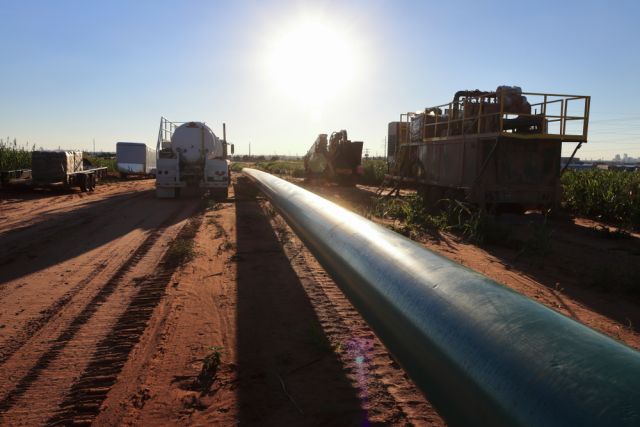
East Daley Analytics will look at factors driving market volatility in its annual “Dirty Little Secrets” webinar. (Source: Shutterstock)
Over the last year, as midstream companies faced growing obstacles to add to their assets through construction, they’ve turned to mergers to add to their networks.
Current market conditions suggest 2024 will be a good time for more mergers to happen, according to a report released Dec. 5 from Ajay Bakshani, a CFA for East Daley Analytics.
“As the midstream transitions into a lower-growth environment with increasing regulations, we expect M&A to continue,” Bakshani wrote. “Companies will use mergers to gain scale, better position themselves to take advantage of growing export markets and optimize their existing assets in the ground.”
EDA will explore the status of the midstream M&A market as part of its annual “Dirty Little Secrets” report. At 11 a.m. CST on Dec. 13, EDA will host a webinar, “Volatility Will Continue Until Morale Improves,” in which its analysts will take a closer look at what’s driving M&A and the potential of future moves, including possible combinations that have attracted analysts’ interests.
The major difference for midstream companies over the last year and into the future is the amount of cash many businesses have on hand. For the overall industry, growth capex, excluding M&A, shrank from $42 billion in 2019 to $29 billion in 2023. Free cash flow after distributions in the same time frame went from negative to positive territory, meaning money is available for M&A.
Some of the recent M&A actions include Williams Cos.’ purchase of Cureton Midstream and full ownership complete stake of Rocky Mountain Midstream, and Kinder Morgan’s acquisition of NextEra Energy’s South Texas assets.
“Larger companies will need to source volumes to keep long-haul transportation assets highly utilized, while small-to-midcap companies need downstream exposure to extract more fees as production growth slows,” Bakshani wrote.
Analysts will also take a look at how midstream companies could find some bargains by moving in Tier 2 basins to take advantage of increased gas and LNG demand and will otherwise look at the factors driving volatility in the energy markets.
Recommended Reading
Galp Seeks to Sell Stake in Namibia Oilfield After Discovery, Sources Say
2024-04-22 - Portuguese oil company Galp Energia has launched the sale of half of its stake in an exploration block offshore Namibia.
Sinopec Brings West Sichuan Gas Field Onstream
2024-03-14 - The 100 Bcm sour gas onshore field, West Sichuan Gas Field, is expected to produce 2 Bcm per year.
Rhino Taps Halliburton for Namibia Well Work
2024-04-24 - Halliburton’s deepwater integrated multi-well construction contract for a block in the Orange Basin starts later this year.
E&P Highlights: April 29, 2024
2024-04-29 - Here’s a roundup of the latest E&P headlines, including a new contract award and drilling technology.
E&P Highlights: March 11, 2024
2024-03-11 - Here’s a roundup of the latest E&P headlines, including a new bid round offshore Bangladesh and new contract awards.




